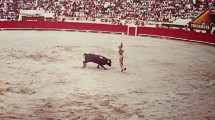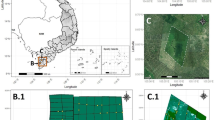Abstract
A 69-year-old man was found lying on the floor at his home address. According to the police report every room was filled with refuse and “thirty or so cats” were resident in the house. The body showed signs of extensive post mortem animal predation with opening of the chest and abdominal cavities, loss of soft tissues of the face, loss of soft tissues and organs of the neck, loss of the lungs and heart, and injuries to the liver, right kidney, stomach, transverse colon and cecum. The cause of death could not be determined from the autopsy given the absence of certain vital organs such as the heart and lungs, and the presence of early putrefaction. The case shows that considerable soft tissue, bone and organ loss may occur when a number of animals work in concert. The collective term for such a group of cats is a clowder. The extent of post-mortem damage from animal activity therefore relies not only on the species involved, but also the numbers of participating animals.






Similar content being viewed by others
References
Buschmann C, Solarino B, Püschel K, Czubaiko F, Heinze S, Tsokos M. Post-mortem decapitation by domestic dogs: three case reports and review of the literature. Forensic Sci Med Pathol. 2011;7:344–9.
Steadman DW, Worne H. Canine scavenging of human remains in an indoor setting. Forensic Sci Int. 2007;172:78–82.
Byard RW. Animals, autopsies and artefacts. Forensic Sci Med Pathol. 2011;7:309–10.
Byard RW. An unusual pattern of post-mortem injury caused by Australian fresh water yabbies (Cherax destructor). Forensic Sci Med Pathol. 2020;16:373–6.
Omond KJ, Winskog C, Cala A, Byard RW. Neonatal limb amputation – an unusual type of postmortem canine predation. J Forensic Sci. 2017;62:937–9.
Byard RW. Implications of genital mutilation at autopsy. J Forensic Sci. 2017;62:926–9.
Byard RW. Domestic dogs (Canis lupus familiaris) and forensic practice. Forensic Sci Med Pathol. 2016;12:241–2.
Gunawarden SA. Artefactual incised wounds due to post-mortem predation by the Sri Lankan water monitor (kabaragoya). Forensic Sci Med Pathol. 2016;12:324–30.
Duband S, Forest F, Clemenson A, Debout M, Péoc’h M. Postmortem injuries inflicted by crawfish: morphological and histological aspects. Forensic Sci Int. 2011;206:e49–51.
Vanin S, Zancaner S. Post-mortal lesions in freshwater environment. Forensic Sci Int. 2011;212:e18–20.
Boglioli LR, Taff ML, Turkel SJ, Taylor JV, Peterson CD. Unusual infant death: dog attack or postmortem mutilation after child abuse? Am J Forensic Med Pathol. 2000;21:389–94.
Lu X, Ke D, Zeng X, Gong G, Ci R. Status, ecology, and conservation of the Himalayan griffon Gyps Himalayensis (Aves, Accipitridae) in the Tibetan plateau. Ambio. 2009;38:166–73.
Byard RW, Tsokos M. Forensic issues in cases of Diogenes syndrome. Am J Forensic Med Pathol. 2007;28:177–81.
Byard RW. Diogenes or Havisham syndrome and the mortuary. Forensic Sci Med Pathol. 2014;10:1–2.
Author information
Authors and Affiliations
Corresponding author
Additional information
Publisher’s note
Springer Nature remains neutral with regard to jurisdictional claims in published maps and institutional affiliations.
Rights and permissions
About this article
Cite this article
Byard, R.W. Postmortem predation by a clowder of domestic cats. Forensic Sci Med Pathol 17, 144–147 (2021). https://doi.org/10.1007/s12024-020-00304-6
Accepted:
Published:
Issue Date:
DOI: https://doi.org/10.1007/s12024-020-00304-6




